Abstract
BL-S 640 was evaluated in vitro by comparison with cephalothin, cephaloridine, cefazolin, and cephalexin. The new compound was more active than the control cephalosporins against most major gram-negative and some gram-positive species. Moreover, its antibacterial spectrum included strains of Enterobacter, Proteus morganii, P. rettgeri, and Providencia stuartii, species generally resistant to the other cephalosporins. BL-S 640 was an effective bactericidal agent for strains of various species of Enterobacteriaceae. In human plasma, the compound was 58% protein bound.
Full text
PDF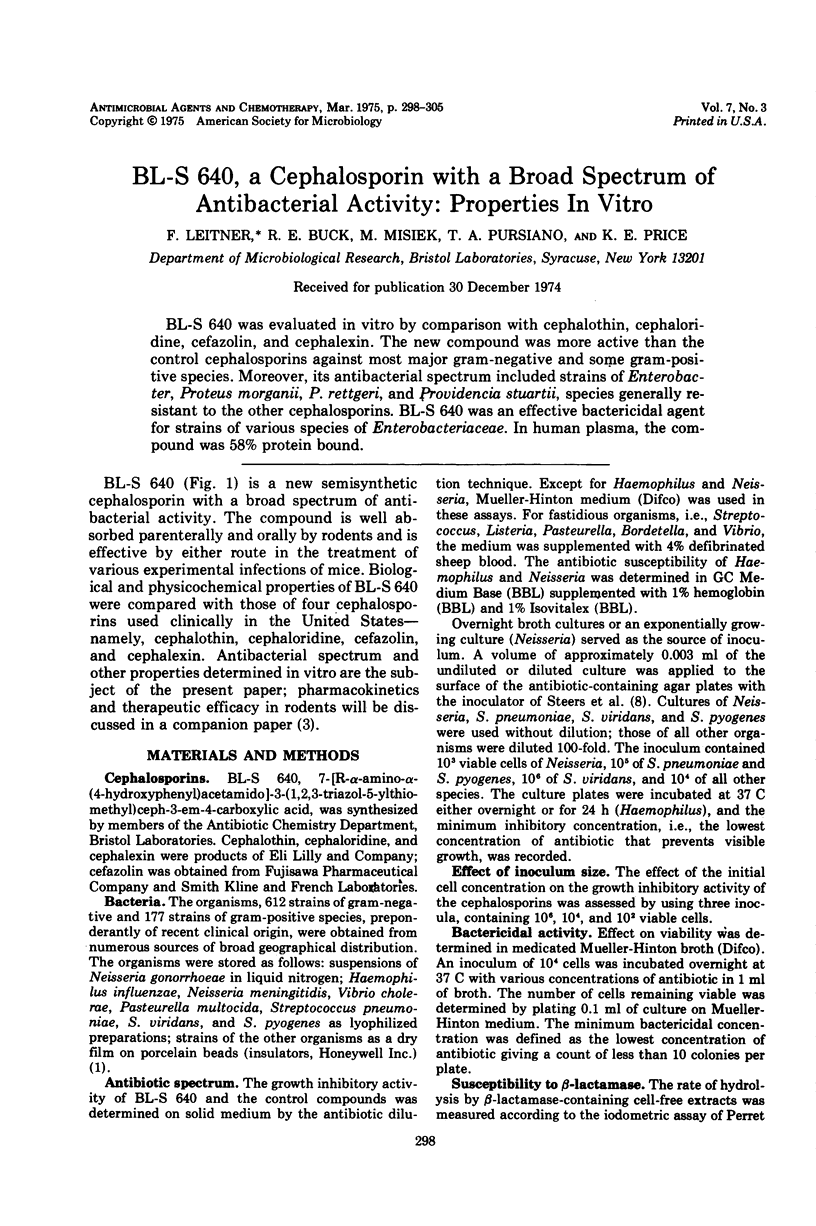
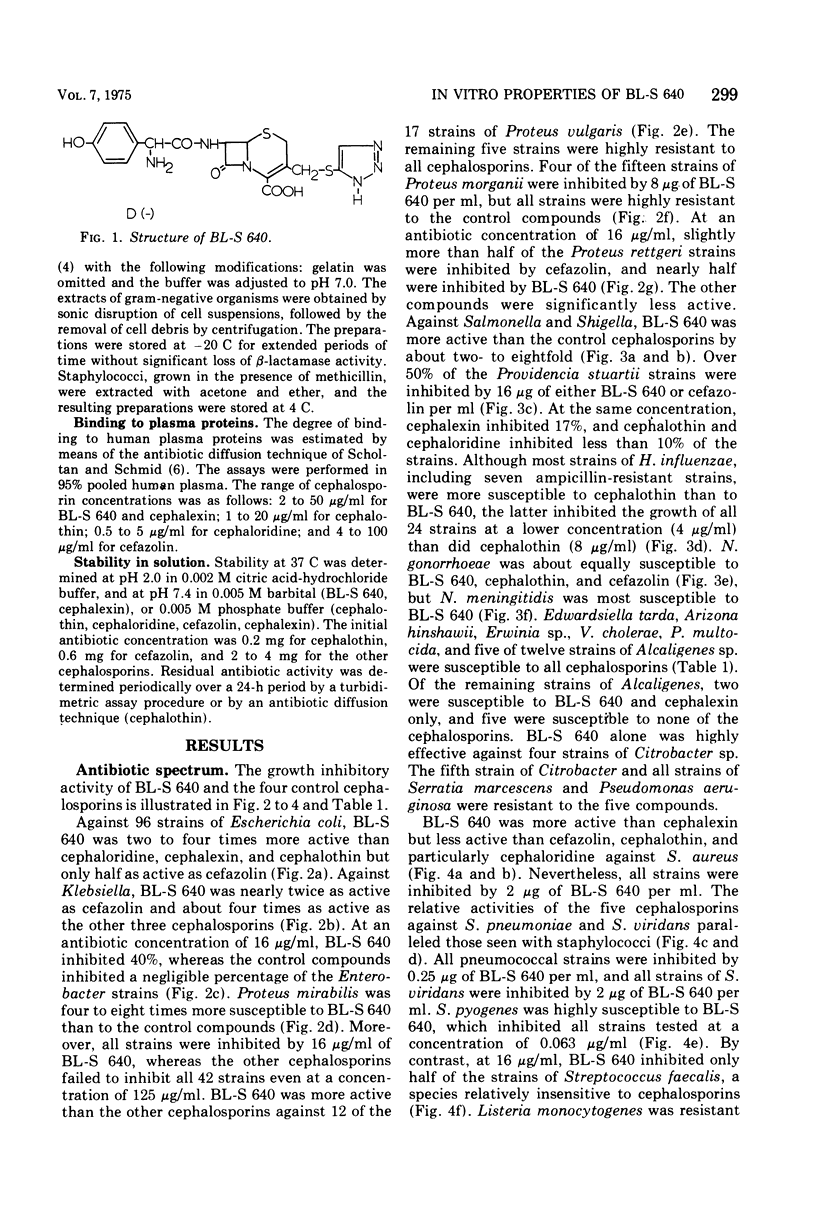
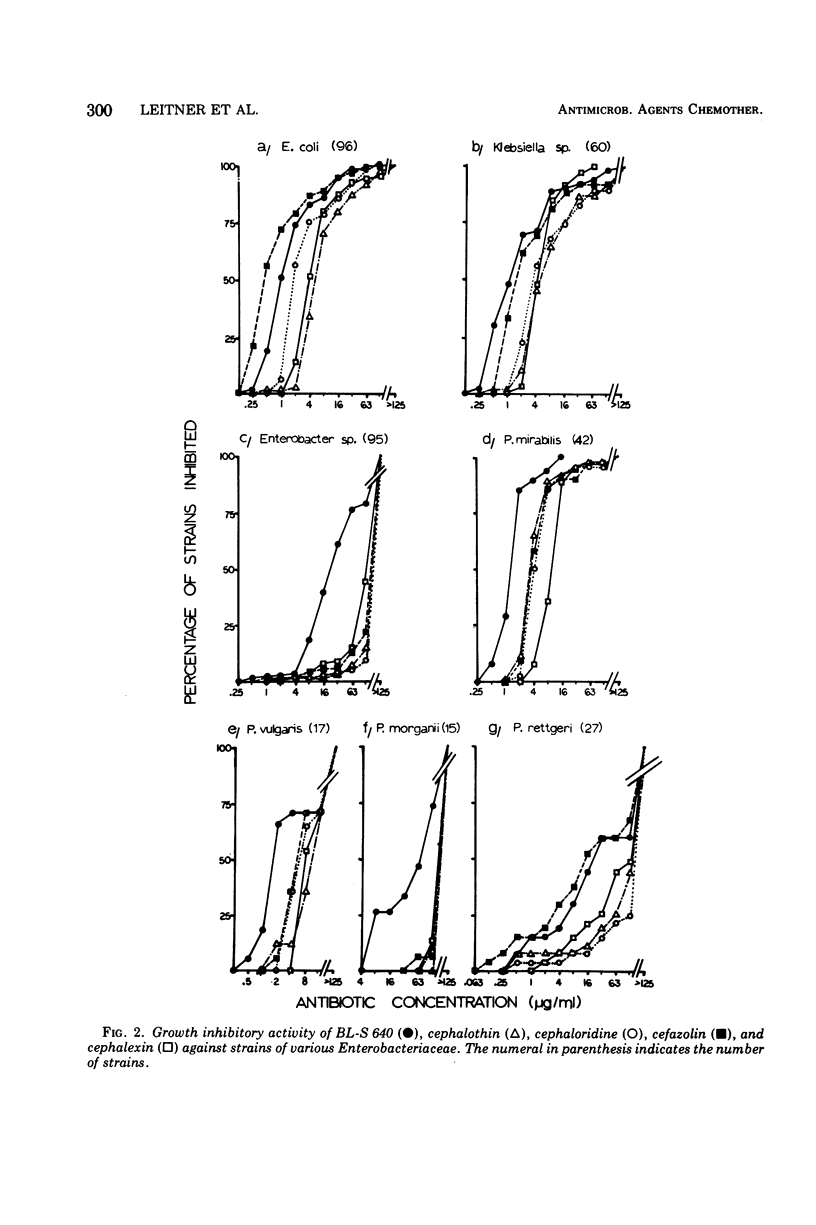
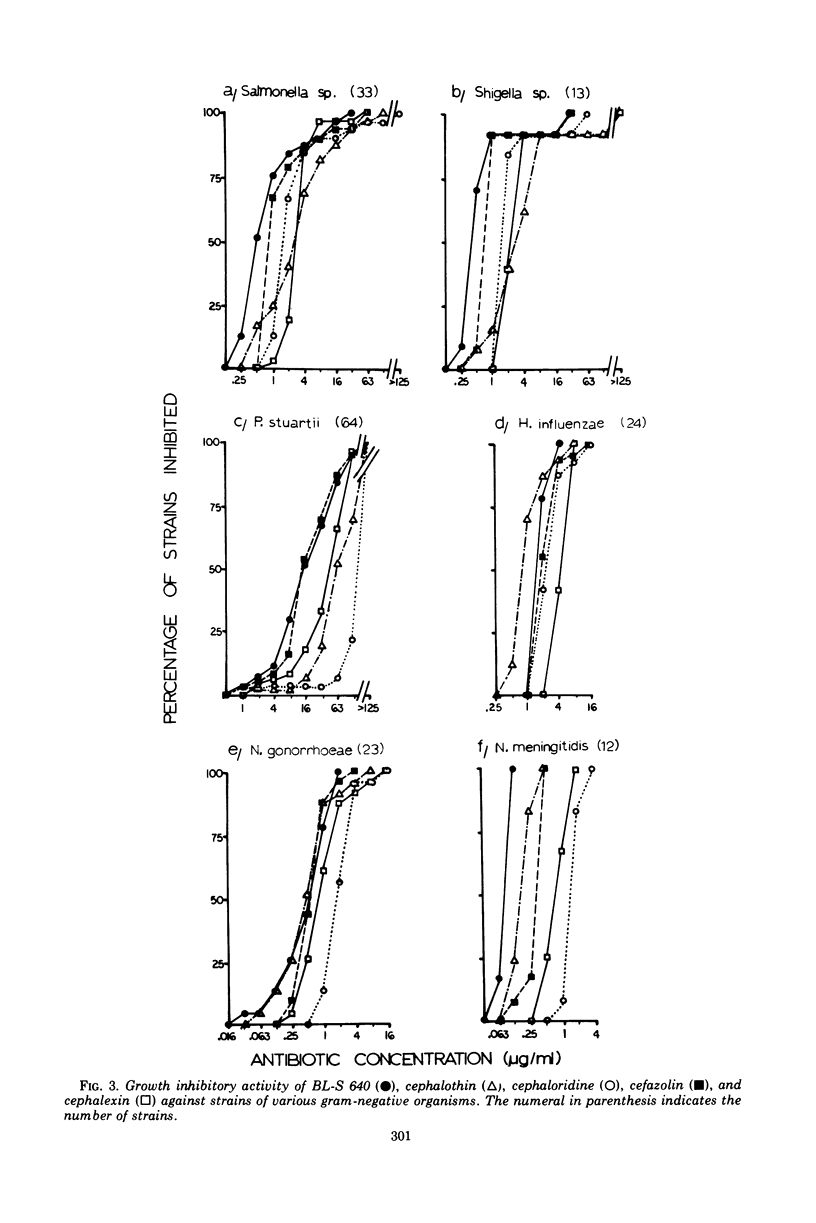
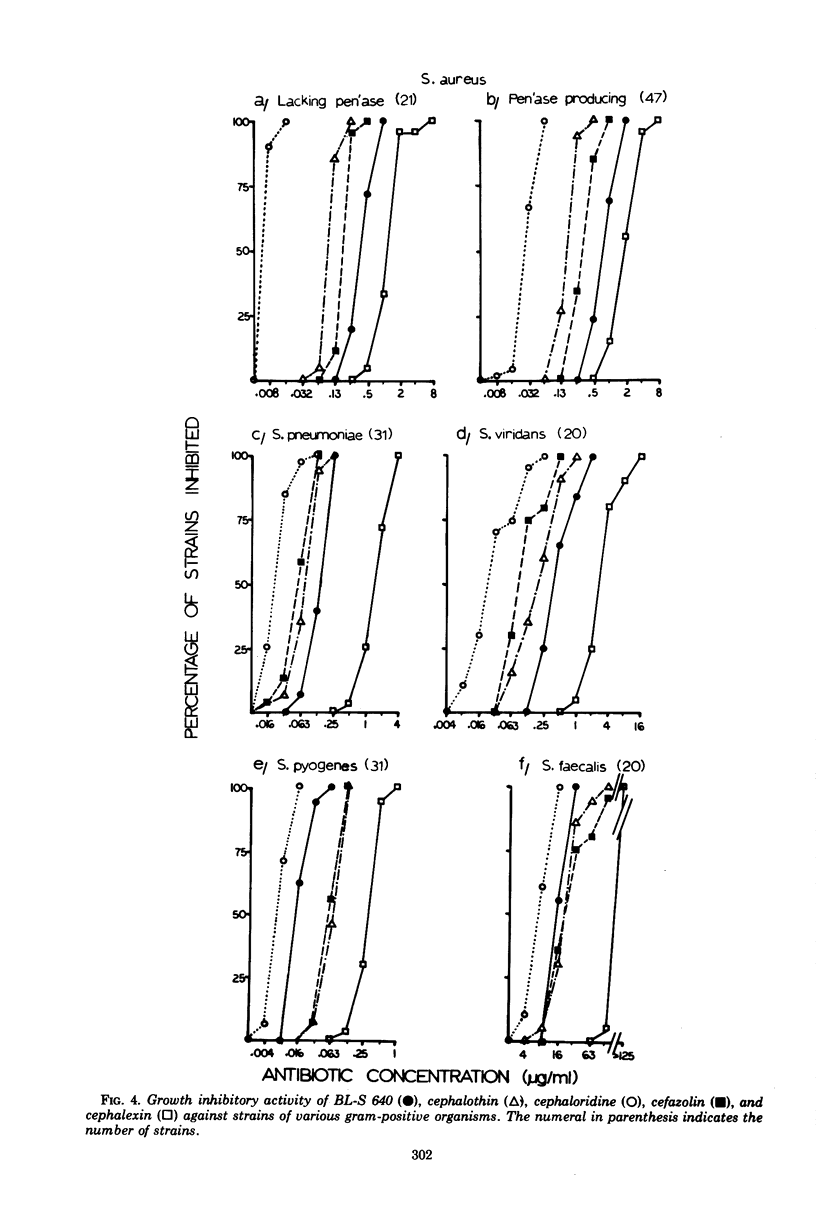
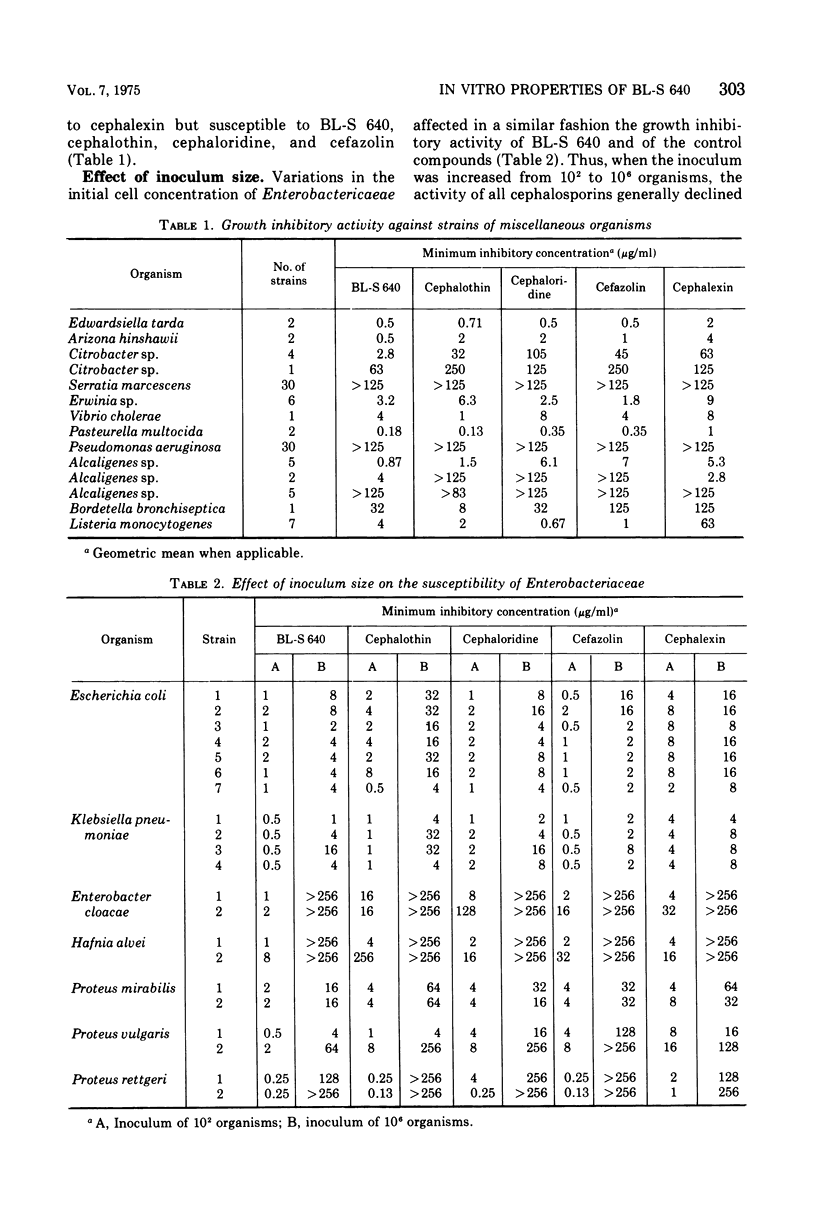
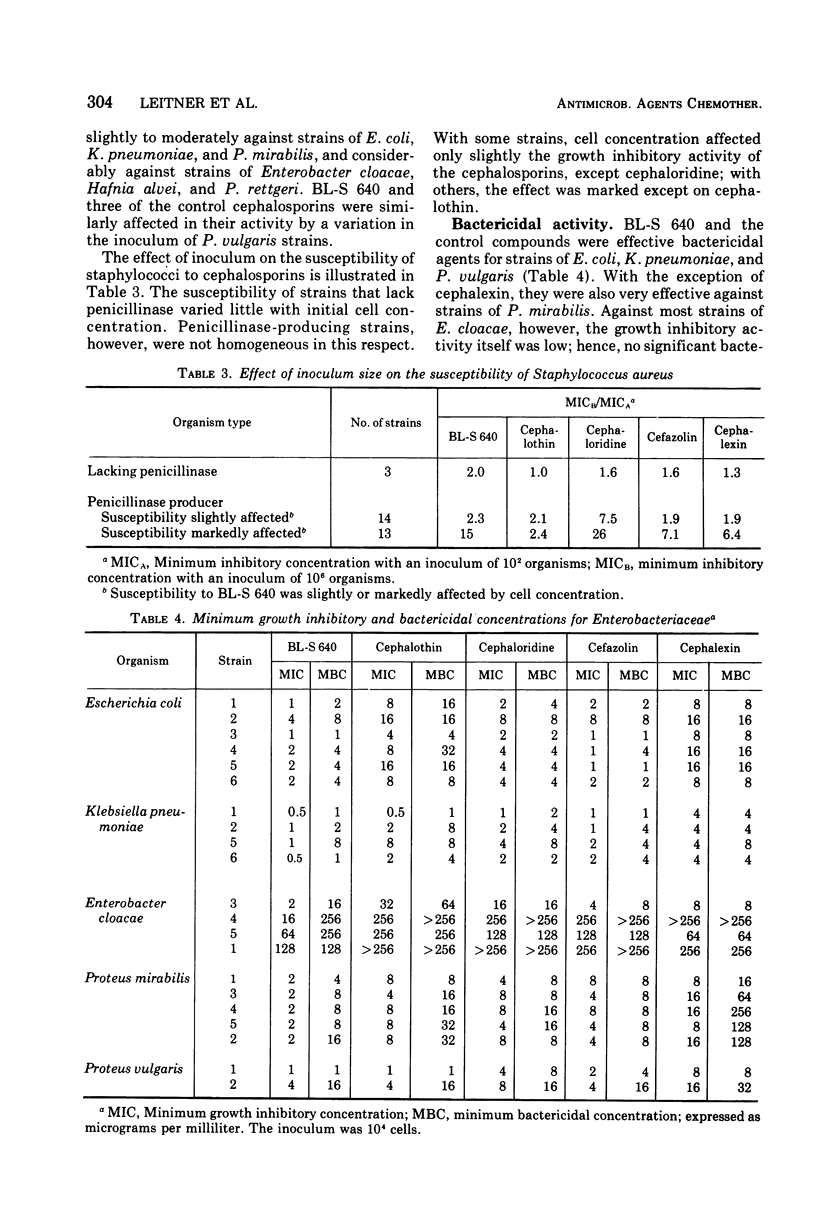
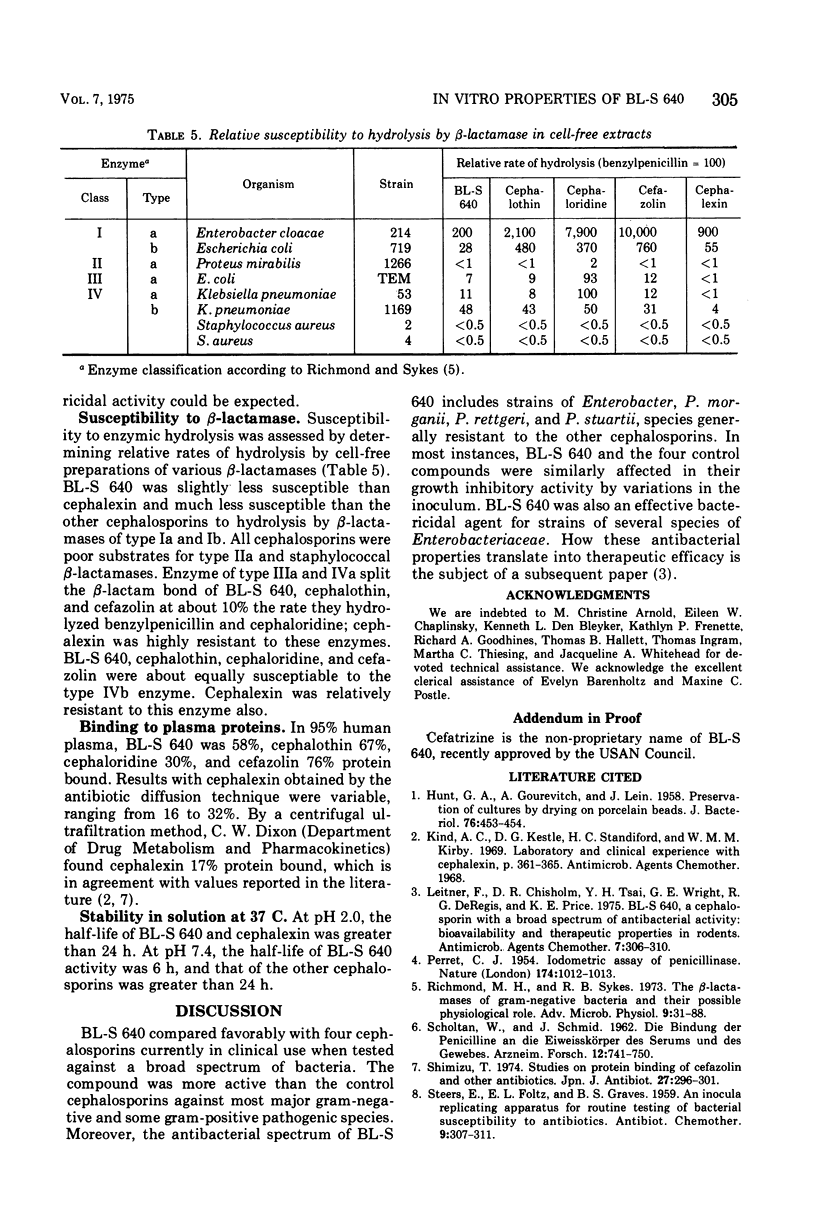
Selected References
These references are in PubMed. This may not be the complete list of references from this article.
- HUNT G. A., GOUREVITCH A., LEIN J. Preservation of cultures by drying on porcelain beads. J Bacteriol. 1958 Oct;76(4):453–454. doi: 10.1128/jb.76.4.453-454.1958. [DOI] [PMC free article] [PubMed] [Google Scholar]
- Leitner F., Chisholm D. R., Tsai Y. H., Wright G. E., Deregis R. G., Price K. E. BL-S640, a cephalosporin with a broad spectrum of antibacterial activity: bioavailability and therapeutic properties in rodents. Antimicrob Agents Chemother. 1975 Mar;7(3):306–310. doi: 10.1128/aac.7.3.306. [DOI] [PMC free article] [PubMed] [Google Scholar]
- PERRET C. J. Iodometric assay of penicillinase. Nature. 1954 Nov 27;174(4439):1012–1013. doi: 10.1038/1741012a0. [DOI] [PubMed] [Google Scholar]
- Richmond M. H., Sykes R. B. The beta-lactamases of gram-negative bacteria and their possible physiological role. Adv Microb Physiol. 1973;9:31–88. doi: 10.1016/s0065-2911(08)60376-8. [DOI] [PubMed] [Google Scholar]
- SCHOLTAN W., SCHMID J. [The binding of penicillins on the proteins of the blood and tissues]. Arzneimittelforschung. 1962 Aug;12:741–750. [PubMed] [Google Scholar]
- Shimizu T. Studies on protein binding of cefazolin and other antibiotics. Jpn J Antibiot. 1974 Jun;27(3):296–301. [PubMed] [Google Scholar]


